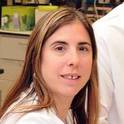Reproducible culture of primary articular chondrocytes has been difficult because articular chondrocytes plated in monolayer with serum-containing media will rapidly de-differentiate. Several limitations of chondrocyte cell culture have been overcome with development of a three-dimensional alginate bead system that more closely resembles the architecture of cartilage in vivo. But most studies to date are not completely serum-free especially in reports of equine primary articular chondrocyte cultures. In this report, we describe the development and utility of a serum, hormone and albumin free, three-dimensional alginate culture system for primary, equine, aged, articular chondrocytes (EACs). We measured equine articular chondrocyte cell yield and survival, production and degradation of collagen type II, a clinically relevant endpoint of osteoarthritis, and the effects of a novel OA therapeutic on collagen metabolism. Articular chondrocytes were isolated from the carpus of aged, donor horses euthanized following the standards and protocols of the New Bolton Center University of Pennsylvania. Three horses ranging in age from 10-21 years were included. 10x 106 articular chondrocytes were isolated from the carpals of each horse whether of lateral or medial origin and were plated at 2.5x106 cells per milliliter alginate and fed serum-free media alone (control) or with 2500nM ECPF-1(treated) and conditioned media was collected on days 2 and 5 in culture. At day 2 in culture, 2500nM ECPF-1 increased intact collagen type II production two-fold (401.24ng/culture control; 985.74ng/culture treated) and maintained a 1.3 fold increase through day 5 in culture (1476.43ng/culture control; 1845.98ng/culture treated) and a slight decrease in collagen type II degradation product produced following 2500nM ECPF-1 treatment. We have demonstrated that primary, aged, equine articular chondrocytes can be reared in serum and hormone free media and can respond to treatment with ECPF-1.
Available at: http://works.bepress.com/marina_dangelo/33/
